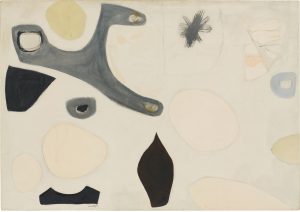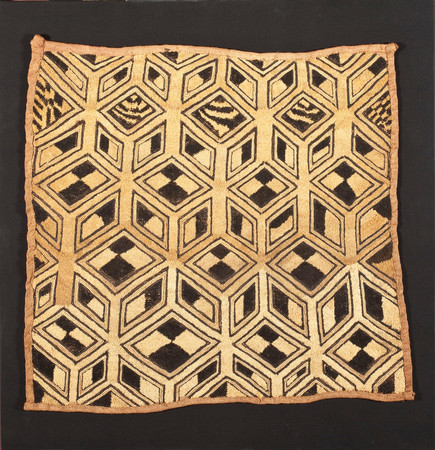Los Angeles County Museum of Art (LACMA)
(April 24-September 11)
Agnes Martin was an artist’s artist. Her approach to art was so singular, so personal and so hermetic that only other artists could (and may still) comprehend, or even appreciate, it. Born in Saskatchewan, Canada, Martin was a fully mature painter when she arrived in New York. She invented a formal language of such restraint and quietude that it skirts the invisible. Fittingly, LACMA has installed this retrospective in a low light, not only to protect the fragile marks Martin made on canvas as well as paper, but to prompt us to look closer.
Martin is known for introducing the grid—the evenly spaced recurrence of straight vertical and horizontal lines forming a pattern of quadrilaterals—into the vocabulary of American art. She presented the even crosshatch as a thing in itself, not as an armature for anything else. Her minimalist successors, who helped bring her to prominence, regarded the grid as an ideological tool, a non-hierarchical structure that forced the viewer to regard it as a fixed edifice. But Martin was impelled by a more spiritual impulse. The grid—and, indeed, most of the compelling patterns and repeated devices that dot the exhibition—serves as a focus for contemplation, like the highly simplified tantric drawings used for meditation in Eastern practices.
 Agnes Martin | Untitled, C. 1955. Oil on Canvas, 46 1/2 x 66 1/4 inches. Private Collection. © 2016 Agnes Martin/Artists Rights Society (ARS), New York. Photo Courtesy Pace Gallery.
Agnes Martin | Untitled, C. 1955. Oil on Canvas, 46 1/2 x 66 1/4 inches. Private Collection. © 2016 Agnes Martin/Artists Rights Society (ARS), New York. Photo Courtesy Pace Gallery. Agnes Martin | Summer, 1964. Watercolor, ink, and gouache on paper, 9 1/4 x 9 1/4 inches. Collection Patricia L Lewy Gidwitz © 2016 Agnes Martin/Artists Rights Society (ARS), New York. Photo Courtesy Pace Gallery.
Agnes Martin | Summer, 1964. Watercolor, ink, and gouache on paper, 9 1/4 x 9 1/4 inches. Collection Patricia L Lewy Gidwitz © 2016 Agnes Martin/Artists Rights Society (ARS), New York. Photo Courtesy Pace Gallery. It is not the reduction and repetition per se that ravishes so many viewers and confounds so many others; the show’s survey of Martin’s work in the ‘50s and ‘60s includes a number of sculptures, constructions and assemblages that feature these characteristics in a jaunty, even at times aggressive, manner. Rather it is the intimate, even reverent quality of Martin’s two-dimensional work that tests people’s thresholds. You may be moved to exasperation as readily as to tears in a room of her small incised drawings from the early ‘60s but you cannot deny their honesty; they present themselves as devotional objects.
In 1967, Martin left New York and art-making, retreating to northern New Mexico to regroup. Her work had become associated with the hot new avant-garde and she was uncomfortable both with minimalist ideology and with the ego-distorting and work-thwarting effects of fame. Six years later, however, she returned to art (if not to New York) with a suite of prints and, subsequently, a sequence of paintings that lasted until her death in 2004 at the age of 92. The prints reiterate Martin’s gridding in a more neutral manner, asking us to fall under the spell of their lockstep compositions without admiring any handiwork. The paintings do the opposite. Clearly hand-brushed, the horizontal bands of pale color are deliberately luminous and elusive, their watery and earthy tones quavering across each canvas in tender echoes of sky and land. The high desert had become Martin’s field of transcendence. While her earlier work had aided her in finding inner peace, her later work induces outer peace, a contentment with the stratified verities of the natural landscape.
It’s tempting to say that, while Martin kept her conjuration of inner equilibrium to herself in her earlier work, she shared it with us later. But there is something so right, so thorough in those early-‘60s drawings and paintings and even objects that they still move us profoundly. And, conversely, Martin’s later work is hardly showier; it, too, requires second and third glances for the magic to work. Her art may have changed noticeably after she allowed herself to wander in the desert; but her voice did not.









